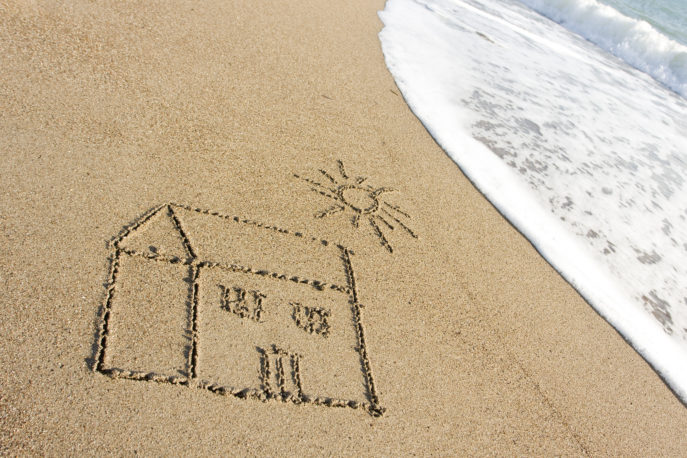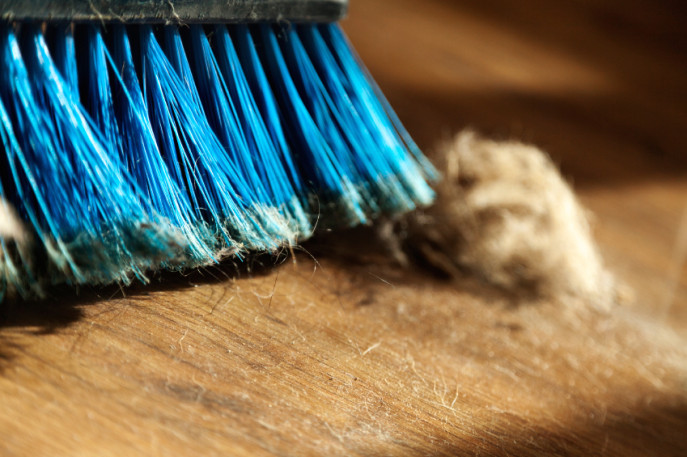
I’m often asked about maintaining a healthy home, and about how to ensure pristine air quality. With summer’s high humidity, mold has been part of several discussions. It is a serious health concern, so much so that I’ve chosen to republish this post with information on how to detect mold, and how to safely eradicate it. People who live in flood-prone areas, most recently those in New Orleans and now, Cedar Rapids, Iowa, must be sure to remove everything that that is water-damaged, including soggy floors and drywall, to be sure mold doesn’t get a start.
An Encore Post by Popular Demand:
There are a few basic requirements for sustaining life; among them are moisture, food, and warmth. Our homes are replete with these three things, and thus, they can be breeding grounds for dangerous and allergy-causing molds. Water damage in walls and insulation, and sustained moisture in heating and central air conditioning systems, can create the perfect breeding ground for microbial mold growth.
If you have water damage or a buildup of moisture from humidity or leaks, you may have the beginnings of a mold problem.
You may not see mold spores, but even when invisible to the eye, they can be present in the air you breathe. Asthma, coughing, sneezing and rashes may be a clue that something unhealthy has permeated your living spaces. Stachybotrys, a celluphyllic mold that is frequently found on the paper covering of sheet rock and ceiling tiles, can be toxic when inhaled, resulting in flu-like symptoms, including sore throats and fatigue.
Toxic mold has become a growing problem in the U.S. in recent years. Why? As insulation improved and homes became more air-tight, exchange with fresh air from outside has slowed, creating perfect conditions for mold to flourish. If you smell a musty odor, that may be a sign there is a mold problem. You may see a slowly spreading stain across ceilings or walls, on shower curtain liners, or even books or clothing that have become damp from humidity or water leaks.
Remediation Options
The U.S. Environmental Protection Agency (EPA) divides mold clean-up into three sizes: small, medium and large. Small mold remediation is where the total affected area is less than 10 square feet; medium is between 10 and 100 square feet; large is greater than 100 square feet, or when exposure to mold spores during remediation is a risk.
Mold spores are invisible when airborne, yet still pose a risk to your health, so if you’re going to tackle the clean up yourself, you should isolate the work area as much as possible.
- Clear the room of any uncontaminated furniture.
- Items that can’t be moved should be sealed in plastic.
- Cover any open doorways with plastic sheeting. You’ll need two sheets: attach one to the left side of the doorway, covering two thirds of the opening. Attach the other to the right side of the doorway, covering two thirds of the opening. The overlap will provide a partial seal but will give you access into and out of the room.
- If books, papers or other items have a musty smell but no visible mold, take them outside and vacuum them with a HEPA filter vacuum. Anything that has visible mold should be discarded.
- If items need to be carried through non-contaminated rooms on the way outside, place them in plastic bags first.
- Small patches of mildew on walls and ceilings can be wiped with diluted bleach (one part bleach to ten parts water).
- Even if you don’t think you are sensitive to mold, you should wear plastic safety goggles and a NIOSH N95 mask, along with latex gloves. (Non-latex gloves if you have a latex allergy.)
- For anything larger than 10 square feet, you should consult a professional.
Seeking Professional Help:
Homeowners with water damage should call a Certified Industrial Hygienist (CIH), and have their homes thoroughly investigated for microbial volatile organic compounds (VOCs). A CIH is qualified to enhance the health and safety of people at work and in their homes by identifying hazards, and taking corrective action where necessary. They have met stringent requirements for education and experience, and through examination, have demonstrated expertise in areas such as air sampling, bio hazards, ventilation and engineering controls, health risk analysis, toxicology and methods to mitigate these issues.
For More Information:
An interview highlighting the dangers of toxic mold in New York City is available at the New York Times.
You can go to www.epa.gov and read A Brief Guide to Mold, Moisture and Your Home.
I also recommend a book titled The Mold Survival Guide for your Home and Health, by Jeffrey C. May and Connie L. May, available through amazon.com
Don’t Underestimate This Serious Health Concern:
Like radon, lead paint and other chemicals we now know to be hazardous to our health, we are learning more about mold and its dangers all the time. Mold can be found in multiple household locations that you might not expect, including the underside of furniture, interior window trim, bathroom walls and ceilings, underneath sinks and refrigerators, carpeting, and even around potted plants.
It’s much better to remove any possibility of mold spores along with moisture problems by being vigilant in your home. A Healthy Home is the Ultimate Luxury. (TM)









